
Prince11 with its fifth exhibition, presents the latest works of the artist Eva Gentner. With the exhibition “vane“, Eva Gentner picks up various motifs of the novel “Moby Dick” published in 1851. The gold coin and the bird refer to the starting and ending points of the narrative and the questions it raises about freedom, capitalism and the relationship to nature. The skin-like cement rugs as well as the steeple top lying in the room refer to the idea of a time capsule and hidden message. “Moby Dick” already inspired Eva Gentner’s book of the same name in 2020. Within, she links her own references to the archaic relationship of humankind to nature in poetic text fragments, relating to the novel and its philosophy of nature, aesthetics, and criticism of society and environmental destruction. The novel tells the story of Captain Ahab’s hunt for the White Whale. It is set in the early 19th century, the time of whale hunting and the complete exploration of the world’s oceans. Thousands of sperm whales were hunted annually and the spermaceti found in their foreheads was taken from them, shipped ashore and processed into candles and lamp oil. But for Ahab, oil is not of importance. He is looking for the White Whale, Moby Dick. He nails a gold coin, the Ecuadorian “La Libertad”, into the mast of his ship and promises it to the member of his crew who sees the White Whale first. Together they wander for years through every corner of the world’s oceans in search of the whale, facing their certain death. But the sea takes possession of them and drives Ahab insane. And so Ahab becomes one with the sea, and only in this state is he able to find the White Whale. Only when he ships through the ocean seemingly intuitively, when he gives up surveying, when he becomes completely ‘whale’, does he finally meet Moby Dick. But the whale rams the ship into pieces, so that it sinks with all the members of the crew. On the mast of the sinking ship, one of the sailors hammers a living bird – like a wind vane on a church spire. And what the sea had not already absorbed in the process of the story now disappears without a trace into the depths. At the end of the novel, nothing remains. Nothing except the buoy of the ship, into which a secret message is carved: a worldly design. It is a copy of the tattoo of one of the sailors, a pattern of grotesques and lines, like the scars of a whale’s skin. The buoy thus becomes a time capsule and a message to an indeterminate posterity. Much as they are hidden in golden spheres on steeple tops in this country
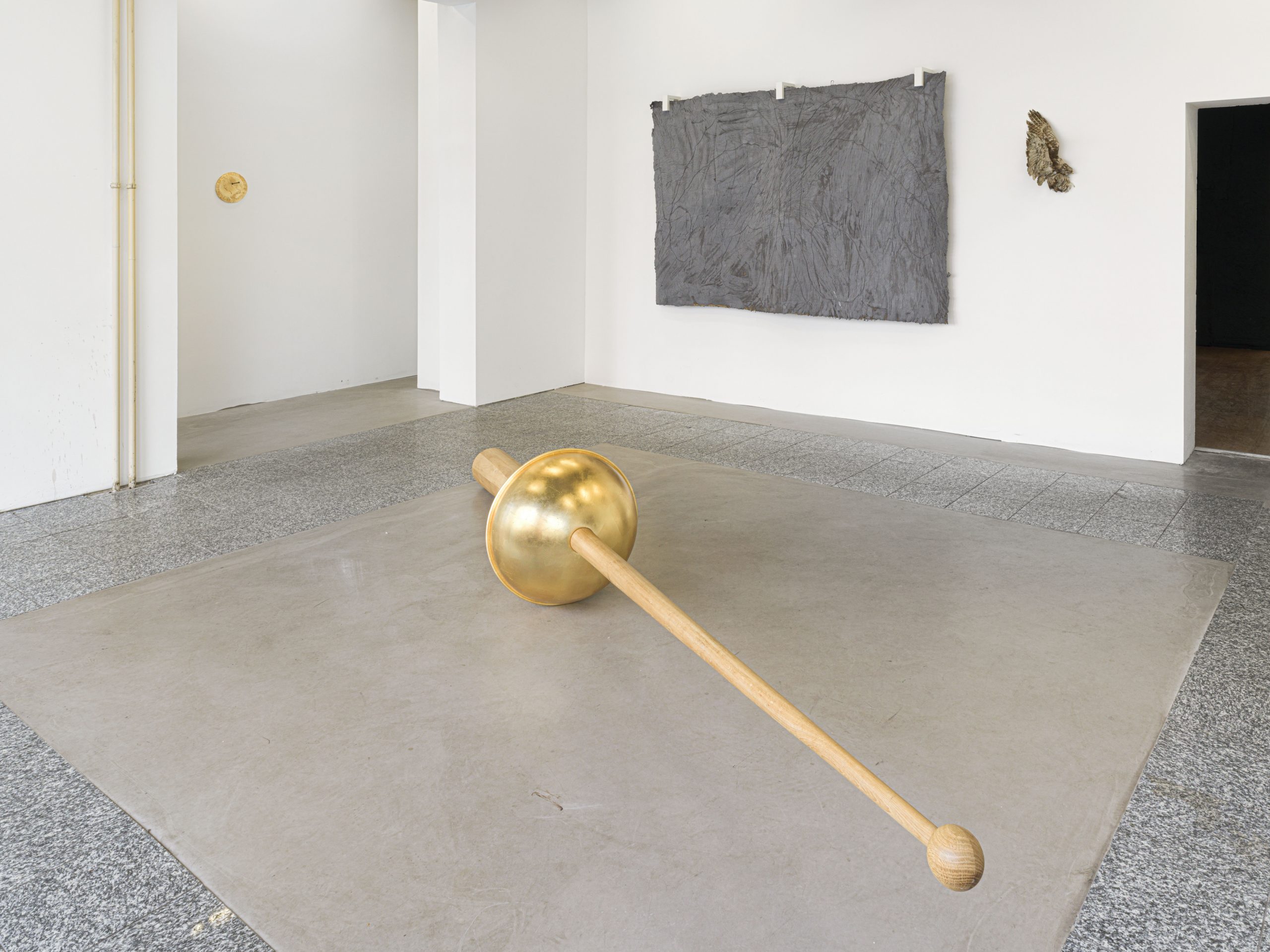
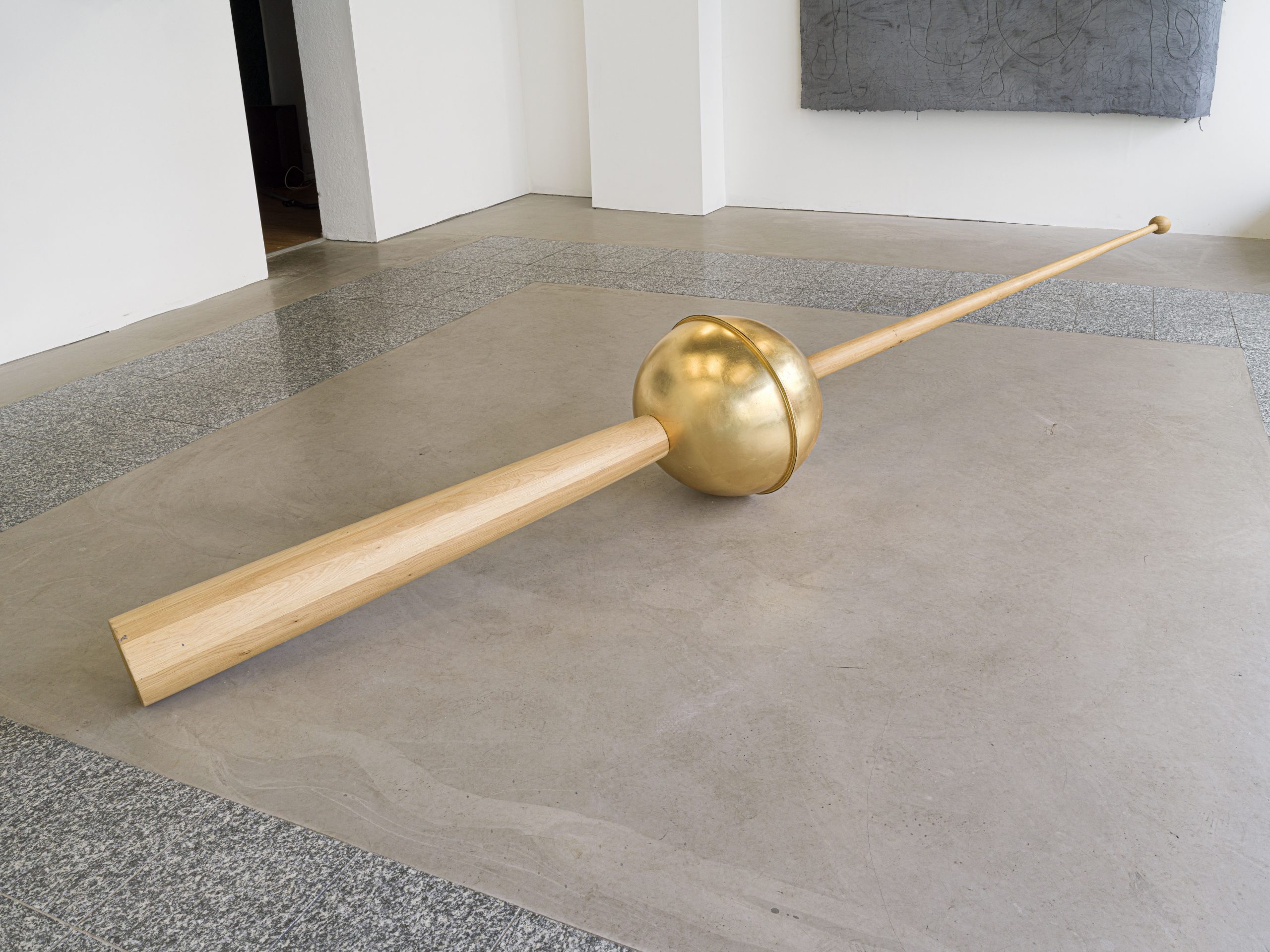
Capsule, 2023
Wood, metal, gold
395 x 56 x 56 cm
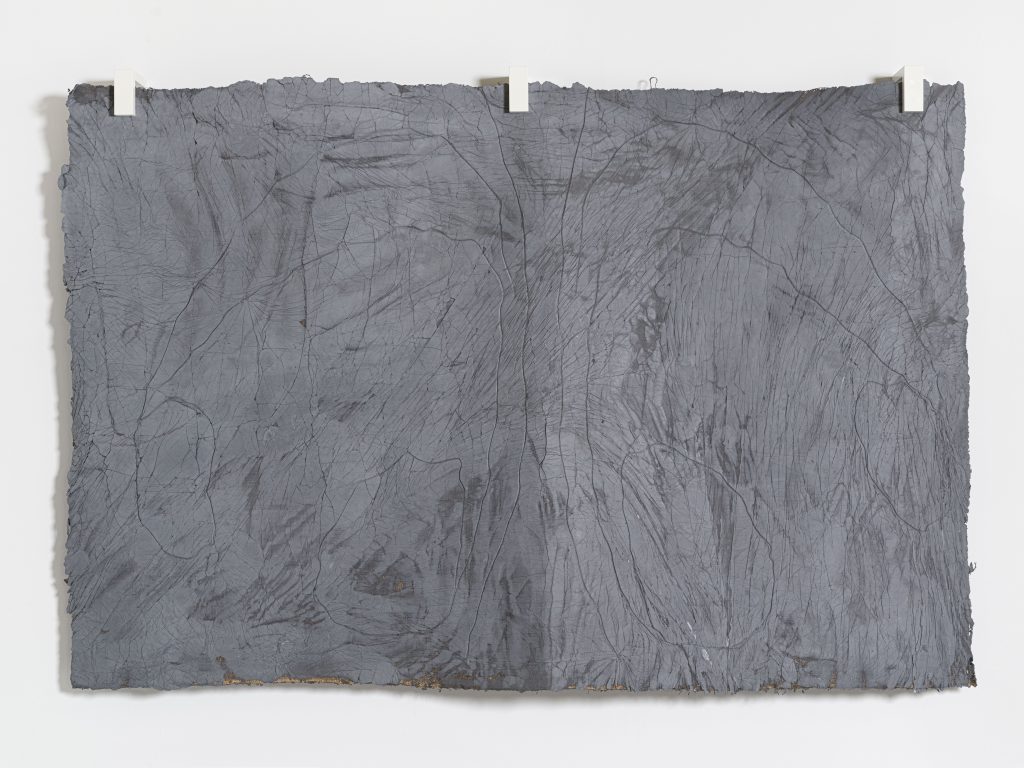
Blanket I, 2023
Cement, pigment, steel angles
160 x 245 cm
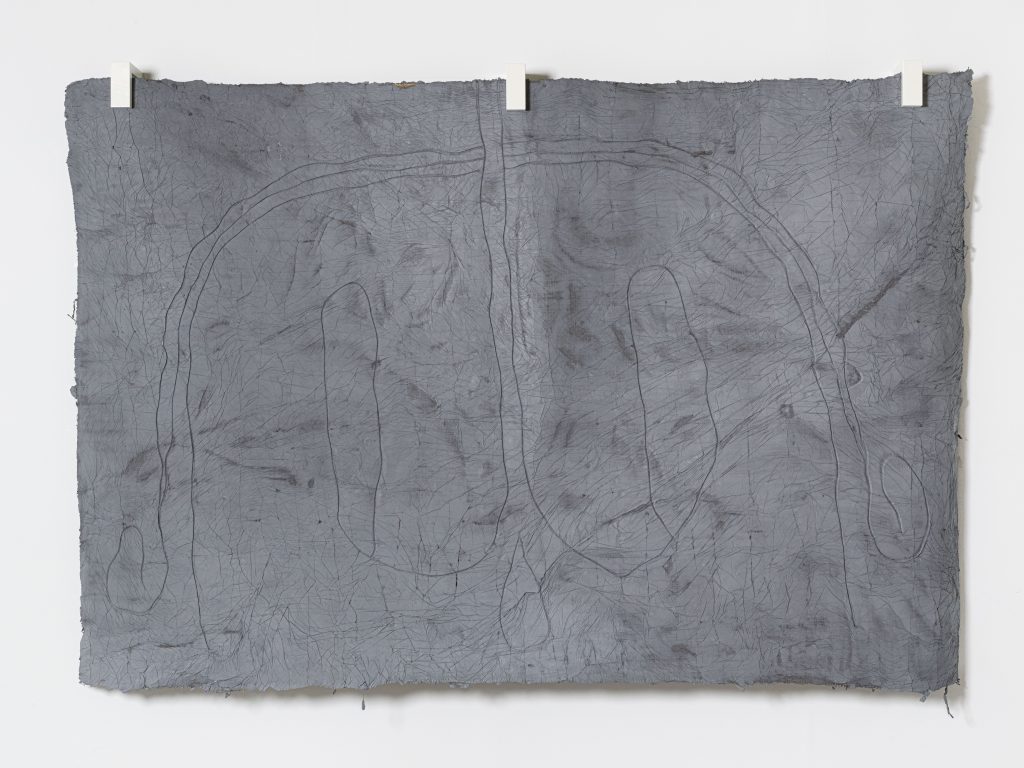
Blanket II, 2023
Cement, pigment, steel angles
160 x 245 cm
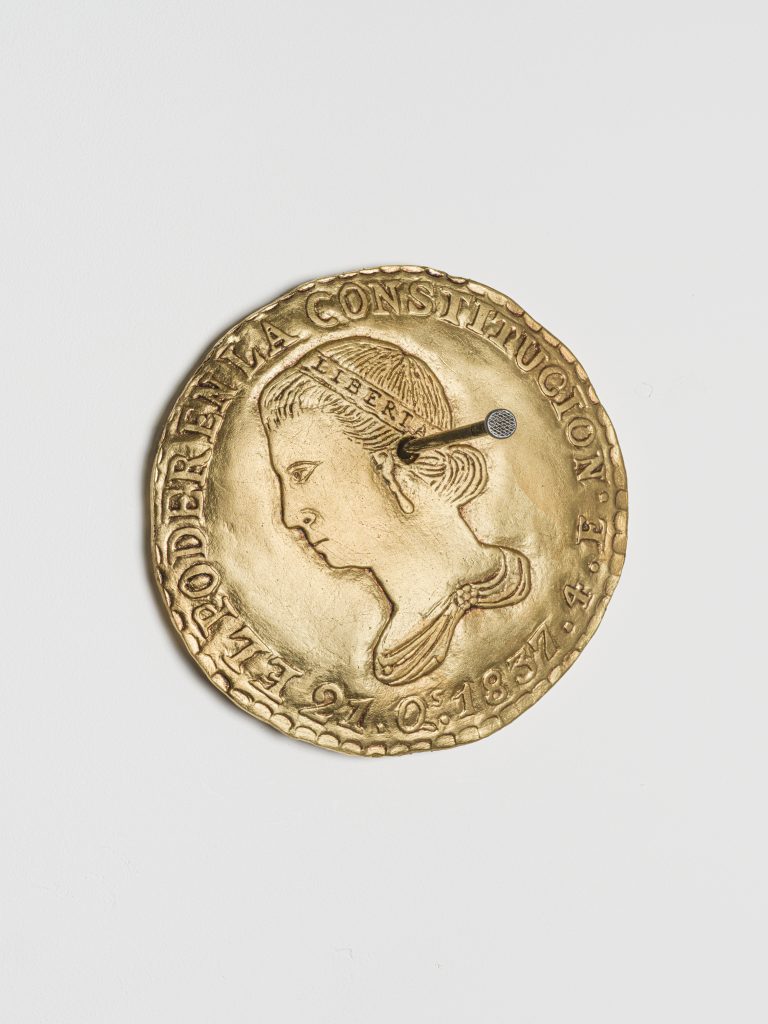
La Libertad, 2023
Edition of 10
Plaster, gold leaf, nail
23 x 23 cm
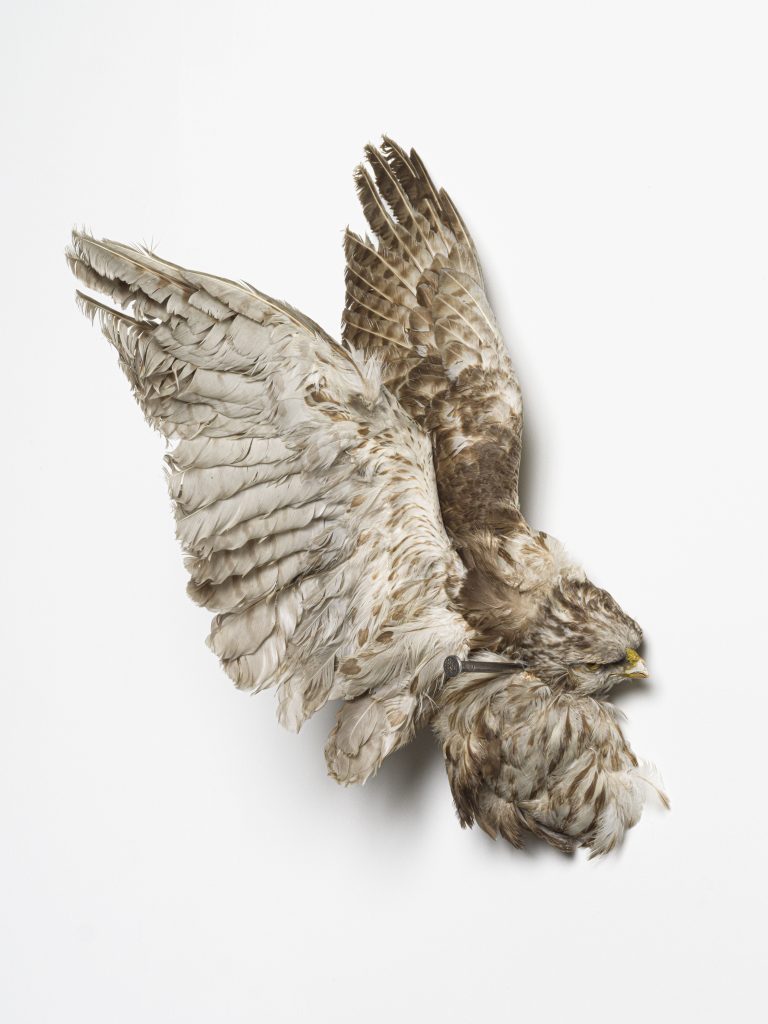
Wind vane, 2023
Bird preparation, nail
53 x 24 x 24 cm
